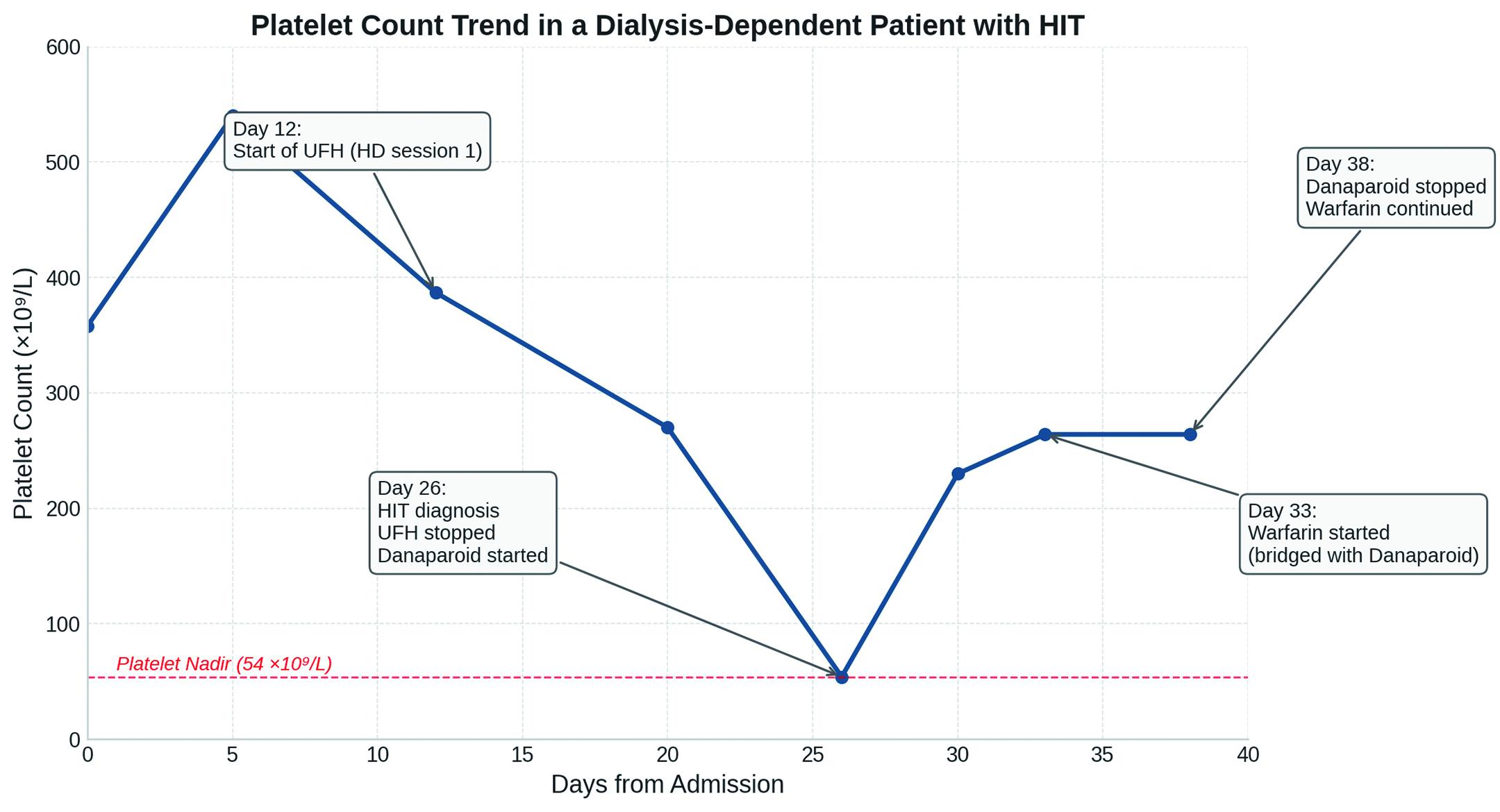Abstracts from the 29^ National Conference of the Italian Society for the Study of Hemostasis and Thrombosis, Bergamo, Italy | 23-25 October 2025
Vol. 4 No. s1 (2025)
PO79 | Trying to hit the hit in the shadow of renal failure: a complex case managed with danaparoid
S. Chessa1,2, M. Anedda2, M.V. Cherchi2, M. Vacca1,2, M. Caboni2, J. Pilia2, A.M. Bussu2, M. Mantega2, G. Costanzo1, D. Firinu1, S. Del Giacco1, A. Mameli3, D. Barcellona3 | 1Department of Medical Science and Public Health, University of Cagliari; 2Internal Medicine, ASL Sulcis, PO Sirai, Carbonia; 3Department of Medical Sciences and Public Health, Hemostasis and Thrombosis Unit, University of Cagliari and AOU of Cagliari, Italy
Publisher's note
All claims expressed in this article are solely those of the authors and do not necessarily represent those of their affiliated organizations, or those of the publisher, the editors and the reviewers. Any product that may be evaluated in this article or claim that may be made by its manufacturer is not guaranteed or endorsed by the publisher.
All claims expressed in this article are solely those of the authors and do not necessarily represent those of their affiliated organizations, or those of the publisher, the editors and the reviewers. Any product that may be evaluated in this article or claim that may be made by its manufacturer is not guaranteed or endorsed by the publisher.
Published: 22 October 2025
388
Views
0
Downloads
Similar Articles
- PO08 | Efficacy and safety of thromboprophylaxis in hospitalized hematological patients: a monocenter retrospective study , Bleeding, Thrombosis and Vascular Biology: Vol. 4 No. s1 (2025)
- PO42 | Acquired Von Willebrad syndrome in patients with myeloproliferative syndrome: literature review and single-center experience , Bleeding, Thrombosis and Vascular Biology: Vol. 4 No. s1 (2025)
- PO70 | Clinical safety and monitoring of apixaban combined with tacrolimus and everolimus in kidney transplant patients: a prospective study , Bleeding, Thrombosis and Vascular Biology: Vol. 4 No. s1 (2025)
- PO09 | Comparison of different aggregometry methods for evaluation of platelet function in patients with myeloproliferative neoplasms , Bleeding, Thrombosis and Vascular Biology: Vol. 4 No. s1 (2025)
- PO43 | Extended treatment with reduced dose of direct oral anticoagulants in patients with venous thromboembolism: a retrospective study , Bleeding, Thrombosis and Vascular Biology: Vol. 4 No. s1 (2025)
- PO71 | How the presence of paraproteins can interfere in coagulation tests: case report , Bleeding, Thrombosis and Vascular Biology: Vol. 4 No. s1 (2025)
- PO10 | Clinical and laboratory features of long-Covid syndrome: a cross-sectional study of 1,337 Covid-19 survivors , Bleeding, Thrombosis and Vascular Biology: Vol. 4 No. s1 (2025)
- PO44 | Emicizumab in acquired haemophilia A , Bleeding, Thrombosis and Vascular Biology: Vol. 4 No. s1 (2025)
- PO72 | Fondaparinux in patient with active tuberculosis , Bleeding, Thrombosis and Vascular Biology: Vol. 4 No. s1 (2025)
- PO11 | Neutrophil cathepsin G and risk of cardiovascular events in patients with diabetes mellitus , Bleeding, Thrombosis and Vascular Biology: Vol. 4 No. s1 (2025)
1-10 of 96
Next
You may also start an advanced similarity search for this article.











